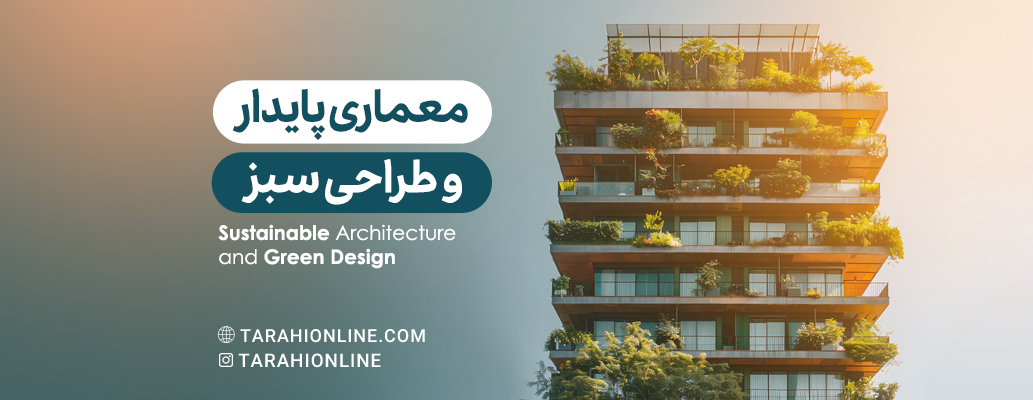
Sustainable architecture and green design focus on minimizing the environmental impact of buildings by enhancing efficiency and moderation in the use of materials, energy, and development space. This concept has gained significant attention due to the rising concerns about climate change and environmental degradation. Sustainable architecture seeks to balance current needs with future resources, ensuring that quality of life and the environment are not compromised for future generations.
Energy Efficiency
Energy efficiency is a cornerstone of sustainable architecture. Techniques such as passive solar design, efficient insulation, and the use of renewable energy sources like solar panels and wind turbines are pivotal in reducing a building’s energy footprint. Energy efficiency includes optimizing heating, ventilation, and air conditioning (HVAC) systems, using double-glazed windows, and implementing low-energy lighting systems like LEDs. Additionally, new technologies such as smart energy management systems and motion sensors for lighting control are beneficial in this regard. Passive solar design involves orienting buildings to maximize natural light and heat from the sun, reducing the need for artificial lighting and heating. Advanced insulation materials can significantly reduce heat loss in winter and keep buildings cool in summer. Using energy-efficient appliances and HVAC systems further contributes to reducing energy consumption.
Sustainable Materials
Choosing sustainable materials is crucial. This includes using recycled materials, low-emission products, and locally sourced materials to minimize transportation emissions. Materials like bamboo, reclaimed wood, and recycled metal are popular choices in green architecture. Sustainable materials should possess features such as high durability, recyclability, and minimal environmental impact. Other advanced materials include recycled concrete, bricks made from industrial waste, and plant-based composites. Using these materials not only reduces waste but also conserves natural resources. Locally sourced materials also contribute to local economies and reduce greenhouse gas emissions from transportation.
Water Conservation
Water conservation is another vital aspect. Implementing systems for rainwater harvesting, using greywater for irrigation, and installing low-flow fixtures can significantly reduce water usage in buildings. Advanced systems such as water recycling, on-site water treatment, and using smart technologies for water management are also beneficial. One innovative approach to water conservation is designing sustainable landscapes that use native and drought-resistant plants, minimizing the need for irrigation. Additionally, using sensors and smart systems for controlling water usage in sanitary fixtures and irrigation can optimize water consumption.
Maintaining a high indoor environmental quality is essential for occupant health and well-being. This includes ensuring good air quality, adequate natural lighting, and the use of non-toxic materials and finishes. Installing advanced HVAC systems with high-efficiency filters and incorporating indoor plants can help improve air quality. Moreover, using paints and construction materials with low VOC (volatile organic compounds) content can reduce health risks associated with air quality. Proper natural lighting design can also enhance the well-being of occupants, reduce energy consumption, and create a more pleasant indoor environment. Ergonomic interior design and effective noise control are additional factors that contribute to indoor environmental quality, ensuring comfort and productivity.
Sustainable Site Selection
Choosing a sustainable site involves considering the local ecosystem, avoiding environmentally sensitive areas, and ensuring easy access to public transportation. This helps in reducing the overall carbon footprint of the project. Sustainable site selection also includes a thorough assessment of the environmental and social impacts of the project and efforts to mitigate negative effects. Using GIS analysis and environmental modeling can aid in optimizing site selection. Finally, designing the site to maximize natural sunlight and airflow can have significant positive impacts.
Green Roofs and Walls
Green roofs and walls are innovative features in sustainable architecture. They help in regulating building temperature, reducing stormwater runoff, and providing habitat for wildlife. These features also contribute to air quality improvement. Green roofs and walls can also enhance the aesthetic appeal of buildings and create new green spaces in urban areas. These roofs can serve as recreational spaces for residents. Additionally, smart irrigation systems and selecting appropriate plants can improve the efficiency of these spaces.
Renewable Energy Integration
Integrating renewable energy sources into the building's design, such as solar panels, wind turbines, and geothermal systems, is key to achieving energy independence and reducing greenhouse gas emissions. Using hybrid systems that can combine various renewable energy sources is also beneficial in this regard. Furthermore, utilizing technologies like energy storage systems (batteries) can help in maintaining energy supply stability during low-light or windless periods. Also, designing buildings to optimize solar and wind energy utilization can reduce dependence on fossil fuels.
Waste Reduction
Sustainable architecture emphasizes waste reduction through practices such as recycling construction materials, designing for disassembly, and implementing composting systems. This helps in minimizing the environmental impact of construction waste. Using recyclable materials and reducing the use of packaging materials can also aid in waste reduction. Additionally, educating staff and residents about the importance and methods of waste reduction can contribute to the success of this approach. Waste management programs that include source separation and material recycling can improve efficiency and reduce waste.
Adaptive Reuse
Adaptive reuse involves repurposing old buildings for new uses, preserving historical and cultural heritage while reducing the need for new construction. This approach is both economically and environmentally beneficial. Adaptive reuse can include converting old industrial buildings into new residential or commercial spaces, transforming old schools and hospitals into multi-functional buildings, and utilizing historical buildings for museums and art galleries. This approach can help preserve the cultural and historical identity of communities and prevent the depletion of natural resources.
Sustainable architecture and green design are essential for mitigating the environmental impact of the built environment. By prioritizing energy efficiency, sustainable materials, water conservation, indoor environmental quality, and renewable energy, we can create healthier, more sustainable living spaces. Embracing these practices not only benefits the planet but also enhances the quality of life for future generations.